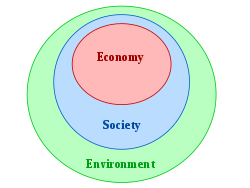From Wikipedia, the free encyclopedia
In medicine, patient compliance (also adherence, capacitance)
describes the degree to which a patient correctly follows medical
advice. Most commonly, it refers to medication or drug compliance, but
it can also apply to other situations such as medical device use, self care,
self-directed exercises, or therapy sessions. Both patient and
health-care provider affect compliance, and a positive physician-patient
relationship is the most important factor in improving compliance.
Access to care plays a role in patient adherence, whereby greater wait
times to access care contributing to greater absenteeism. The cost of prescription medication also plays a major role.
Compliance can be confused with concordance, which is the process by which a patient and clinician make decisions together about treatment.
Worldwide, non-compliance is a major obstacle to the effective delivery of health care. 2003 estimates from the World Health Organization indicated that only about 50% of patients with chronic diseases living in developed countries follow treatment recommendations with particularly low rates of adherence to therapies for asthma, diabetes, and hypertension.
Major barriers to compliance are thought to include the complexity of
modern medication regimens, poor "health literacy" and not understanding
treatment benefits, occurrence of undiscussed side effects, poor
treatment satisfaction, cost of prescription medicine, and poor
communication or lack of trust between a patient and his or her
health-care provider.
Efforts to improve compliance have been aimed at simplifying medication
packaging, providing effective medication reminders, improving patient
education, and limiting the number of medications prescribed
simultaneously. Studies show a great variation in terms of
characteristics and effects of interventions to improve medicine
adherence. It is still unclear how adherence can consistently be improved in order to promote clinically important effects.
Terminology
In
medicine, compliance (synonymous with adherence, capacitance) describes
the degree to which a patient correctly follows medical advice. Most
commonly, it refers to medication or drug compliance, but it can also
apply to medical device use, self care,
self-directed exercises, or therapy sessions. Both patient and
health-care provider affect compliance, and a positive physician-patient
relationship is the most important factor in improving compliance.
As of 2003, US health care professionals more commonly used the
term "adherence" to a regimen rather than "compliance", because it has
been thought to reflect better the diverse reasons for patients not
following treatment directions in part or in full.
Additionally, the term adherence includes the ability of the patient to
take medications as prescribed by their physician with regards to the
correct drug, dose, route, timing, and frequency. It has been noted that compliance may only refer to passively following orders. The term adherence is often used to imply a collaborative approach to decision-making and treatment between a patient and clinician.
The term concordance has been used in the United Kingdom to involve a patient in the treatment process to improve compliance, and refers to a 2003 NHS
initiative. In this context, the patient is informed about their
condition and treatment options, involved in the decision as to which
course of action to take, and partially responsible for monitoring and
reporting back to the team.
Informed intentional non-adherence is when the patient, after
understanding the risks and benefits, chooses not to take the treatment.
As of 2005, the preferred terminology remained a matter of debate.
As of 2007, concordance has been used to refer specifically to patient
adherence to a treatment regimen which the physician sets up
collaboratively with the patient, to differentiate it from adherence to a
physician-only prescribed treatment regimen. Despite the ongoing debate, adherence has been the preferred term for the World Health Organization, The American Pharmacists Association, and the U.S. National Institutes of Health Adherence Research Network. The Medical Subject Headings of the United States National Library of Medicine defines various terms with the words adherence and compliance. Patient Compliance and Medication Adherence are distinguished under the MeSH tree of Treatment Adherence and Compliance.
Adherence factors
An estimated half of those for whom treatment regimens are prescribed do not follow them as directed.
Side effects
Negative side effects of a medicine can influence adherence.
Health literacy
Cost and poor understanding of the directions for the treatment, referred to as 'health literacy' have been known to be major barriers to treatment adherence.
There is robust evidence that education and physical health are
correlated. Poor educational attainment is a key factor in the cycle of
health inequalities.
Educational qualifications help to determine an individual's
position in the labour market, their level of income and therefore their
access to resources.
Literacy
In 1999 one fifth of UK adults, nearly seven million people, had problems with basic skills, especially functional literacy
and functional numeracy, described as: "The ability to read, write and
speak in English, and to use mathematics at a level necessary to
function at work and in society in general." This made it impossible for
them to effectively take medication, read labels, follow drug regimes,
and find out more.
In 2003, 20% of adults in the UK had a long-standing illness or disability and a national study for the UK Department of Health, found more than one-third of people with poor or very poor health had literary skills of Entry Level 3 or below.
Low levels of literacy and numeracy were found to be associated with socio-economic deprivation.
Adults in more deprived areas, such as the North East of England,
performed at a lower level than those in less deprived areas such as the
South East. Local authority tenants and those in poor health were
particularly likely to lack basic skills.
A 2002 analysis of over 100 UK local education authority
areas found educational attainment at 15–16 years of age to be strongly
associated with coronary heart disease and subsequent infant mortality.
A study of the relationship of literacy to asthma knowledge
revealed that 31% of asthma patients with a reading level of a
ten-year-old knew they needed to see the doctors, even when they were
not having an asthma attack, compared to 90% with a high school graduate
reading level.
Treatment cost
In
2013 the US National Community Pharmacists Association sampled for one
month 1,020 Americans above age 40 for with an ongoing prescription to
take medication for a chronic condition and gave a grade C+ on
adherence. In 2009, this contributed to an estimated cost of $290 billion annually. In 2012, increase in patient medication cost share was found to be associated with low adherence to medication.
The United States is among the countries with the highest prices of prescription drugs
mainly attributed to the government's lack of negotiating lower prices
with monopolies in the pharmaceutical industry especially with brand
name drugs.
In order to manage medication costs, many US patients on long term
therapies fail to fill their prescription, skip or reduce doses.
According to a Kaiser Family Foundation survey in 2015, about three
quarters (73%) of the public think drug prices are unreasonable and
blame pharmaceutical companies for setting prices so high.
In the same report, half of the public reported that they are taking
prescription drugs and a "quarter (25%) of those currently taking
prescription medicine report they or a family member have not filled a
prescription in the past 12 months due to cost, and 18 percent report
cutting pills in half or skipping doses".
In a 2009 comparison to Canada, only 8% of adults reported to have
skipped their doses or not filling their prescriptions due to the cost
of their prescribed medications.
Age
Both young and elderly status have been associated with non-adherence.
The elderly often have multiple health conditions, and around half of all NHS medicines are prescribed for people over retirement age, despite representing only about 20% of the UK population. The recent National Service Framework
on the care of older people highlighted the importance of taking and
effectively managing medicines in this population. However, elderly
individuals may face challenges, including multiple medications with
frequent dosing, and potentially decreased dexterity or cognitive
functioning. Patient knowledge is a concern that has been observed.
In 1999 Cline et al. identified several gaps in knowledge about medication in elderly patients discharged from hospital.
Despite receiving written and verbal information, 27% of older people
discharged after heart failure were classed as non-adherent within 30
days. Half the patients surveyed could not recall the dose of the
medication that they were prescribed and nearly two-thirds did not know
what time of day to take them. A 2001 study by Barat et al. evaluated
the medical knowledge and factors of adherence in a population of
75-year-olds living at home. They found that 40% of elderly patients do
not know the purpose of their regimen and only 20% knew the consequences
of non-adherence. Comprehension, polypharmacy, living arrangement, multiple doctors, and use of compliance aids was correlated with adherence.
In children with asthma self-management compliance is critical
and co-morbidities have been noted to affect outcomes; in 2013 it has
been suggested that electronic monitoring may help adherence.
Social factors of treatment adherence have been studied in children and adolescents with disorders:
- Young people who felt supported by their family and doctor, and had good motivation, were more likely to comply.
- Young adults may stop taking prescribed medication in order to fit
in with their friends, or because they lack insight of their illness.
- Those who did not feel their condition to be a threat to their
social well-being were eight times more likely to comply than those who
perceived it as such a threat.
- Non-adherence is often encountered among children and young adults; young males are relatively poor at adherence.
Ethnicity
People of different ethnic backgrounds have unique adherence issues through literacy, physiology, culture or poverty.
There are few published studies on adherence in medicine taking in
ethnic minority communities. Ethnicity and culture influence some
health-determining behaviour, such as participation in screening
programmes and attendance at follow-up appointments.
Prieto et al emphasised the influence of ethnic and
cultural factors on adherence. They pointed out that groups differ in
their attitudes, values and beliefs about health and illness. This view
could affect adherence, particularly with preventive treatments and
medication for asymptomatic conditions. Additionally, some cultures
fatalistically attribute their good or poor health to their god(s), and
attach less importance to self-care than others.
Measures of adherence may need to be modified for different
ethnic or cultural groups. In some cases, it may be advisable to assess
patients from a cultural perspective before making decisions about their
individual treatment.
Recent studies have shown that black patients and those with
non-private insurance are more likely to be labeled as non-adherent. The increased risk is observed even in patients with a controlled A1c, and after controlling for other socioeconomic factors.
Prescription fill rates
Not
all patients will fill the prescription at a pharmacy. In a 2010 U.S.
study, 20–30% of prescriptions were never filled at the pharmacy. Reasons people do not fill prescriptions include the cost of the medication,
A US nationwide survey of 1,010 adults in 2001 found that 22% chose not
to fill prescriptions because of the price, which is similar to the
20–30% overall rate of unfilled prescriptions. Other factors are doubting the need for medication, or preference for self-care measures other than medication. Convenience, side effects and lack of demonstrated benefit are also factors.
Medication Possession Ratio
Prescription
medical claims records can be used to estimate medication adherence
based on fill rate. Patients can be routinely defined as being 'Adherent
Patients' if the amount of medication furnished is at least 80% based
on days' supply of medication divided by the number of days patient
should be consuming the medication. This percentage is called the
medication possession ratio (MPR). 2013 work has suggested that a
medication possession ratio of 90% or above may be a better threshold
for deeming consumption as 'Adherent'.
Two forms of MPR can be calculated, fixed and variable.
Calculating either is relatively straightforward, for Variable MPR
(VMPR) it is calculated as the number of days' supply divided by the
number of elapsed days including the last prescription.

For the Fixed MPR (FMPR) the calculation is similar but the
denominator is the number of days in a year whilst the numerator is
constrained to be the number of days' supply within the year that the
patient has been prescribed.

For medication in tablet form it is relatively straightforward to
calculate the number of days' supply based on a prescription. Some
medications are less straightforward though because a prescription of a
given number of doses may have a variable number of days' supply because
the number of doses to be taken per day varies, for example with
preventative corticosteroid inhalers prescribed for asthma where the
number of inhalations to be taken daily may vary between individuals
based on the severity of the disease.
Course completion
Once started, patients seldom follow treatment regimens as directed, and seldom complete the course of treatment. In respect of hypertension, 50% of patients completely drop out of care within a year of diagnosis. Persistence with first-line single antihypertensive drugs is extremely low during the first year of treatment. As far as lipid-lowering treatment is concerned, only one third of patients are compliant with at least 90% of their treatment.
Intensification of patient care interventions (e.g. electronic
reminders, pharmacist-led interventions, healthcare professional education
of patients) improves patient adherence rates to lipid-lowering
medicines, as well as total cholesterol and LDL-cholesterol levels.
The World Health Organization (WHO) estimated in 2003 that only
50% of people complete long-term therapy for chronic illnesses as they
were prescribed, which puts patient health at risk. For example, in 2002 statin
compliance dropped to between 25 and 40% after two years of treatment,
with patients taking statins for what they perceive to be preventative
reasons being unusually poor compliers.
A wide variety of packaging approaches have been proposed to help
patients complete prescribed treatments. These approaches include
formats that increase the ease of remembering the dosage regimen as well
as different labels for increasing patient understanding of directions. For example, medications are sometimes packed with reminder systems for the day and/or time of the week to take the medicine. Some evidence shows that reminder packaging may improve clinical outcomes such as blood pressure.
A not-for-profit organisation called the Healthcare Compliance Packaging Council of Europe] (HCPC-Europe) was set up
between the pharmaceutical industry, the packaging industry with
representatives of European patients organisations. The mission of
HCPC-Europe is to assist and to educate the healthcare sector in the
improvement of patient compliance through the use of packaging
solutions. A variety of packaging solutions have been developed by this
collaboration.
World Health Organization Barriers to Adherence
The
World Health Organization (WHO) groups barriers to medication adherence
into five categories; health care team and system-related factors,
social and economic factors, condition-related factors, therapy-related
factors, and patient-related factors. Common barriers include:
| Barrier
|
Category
|
| Poor Patient-provider Relationship
|
Health Care Team and System
|
| Inadequate Access to Health Services
|
Health Care Team and System
|
| High Medication Cost
|
Social and Economic
|
| Cultural Beliefs
|
Social and Economic
|
| Level of Symptom Severity
|
Condition
|
| Availability of Effective Treatments
|
Condition
|
| Immediacy of Beneficial Effects
|
Therapy
|
| Side Effects
|
Therapy
|
| Stigma Surrounding Disease
|
Patient
|
| Inadequate Knowledge of Treatment
|
Patient
|
Improving adherence rates
Role of health care providers
Health care providers play a great role in improving adherence issues. Providers can improve patient interactions through motivational interviewing and active listening.
Health care providers should work with patients to devise a plan that
is meaningful for the patient's needs. A relationship that offers trust,
cooperation, and mutual responsibility can greatly improve the
connection between provider and patient for a positive impact.
The wording that health care professionals take when sharing health
advice may have an impact on adherence and health behaviours, however,
further research is needed to understand if positive framing (e.g., the
chance of surviving is improved if you go for screening) versus negative
framing (e.g., the chance of dying is higher if you do not go for
screening) is more effective for specific conditions.
Technology
In
2012 it was predicted that as telemedicine technology improves,
physicians will have better capabilities to remotely monitor patients in
real-time and to communicate recommendations and medication adjustments
using personal mobile devices, such as smartphones, rather than waiting
until the next office visit.
Medication Event Monitoring Systems, as in the form of smart
medicine bottle tops, smart pharmacy vials or smart blister packages as
used in clinical trials and other applications where exact compliance
data are required, work without any patient input, and record the time
and date the bottle or vial was accessed, or the medication removed from
a blister package. The data can be read via proprietary readers, or NFC
enabled devices, such as smartphones or tablets. A 2009 study stated
that such devices can help improve adherence.
The effectiveness of two-way email communication between health
care professionals and their patients has not been adequately assessed.
Mobile phones
As of 2019, 5.15 billion people, which equates to 67% of the global population, have a mobile device and this number is growing. Mobile phones have been used in healthcare and has fostered its own term, mHealth. They have also played a role in improving adherence to medication. For example, text messaging has been used to remind patients to take medication in patients with chronic conditions such as asthma and hypertension.
Other examples include the use of smartphones for synchronous and
asynchronous Video Observed Therapy (VOT) as a replacement for the
currently resource intensive standard of Directly Observed Therapy (DOT) (recommended by the WHO) for Tuberculosis management. Other mHealth interventions for improving adherence to medication include smartphone applications, voice recognition in interactive phone calls and Telepharmacy. Some results show that the use of mHealth improves adherence to medication and is cost-effective, though some reviews report mixed results. Studies show that using mHealth to improve adherence to medication is feasible and accepted by patients. mHealth interventions have also been used alongside other telehealth interventions such as wearable wireless pill sensors, smart pillboxes and smart inhalers
Forms of medication
Depot injections
need to be taken less regularly than other forms of medication and a
medical professional is involved in the administration of drugs so can
increase compliance. Depot's are used for oral contraceptive pill and antipsychotic medication used to treat schizophrenia and bipolar disorder.
Coercion
Sometimes drugs are given involuntarily to ensure compliance. This can occur if an individual has been involuntarily commitment or are subjected to an outpatient commitment order, where failure to take medication will result in detention and involuntary administration of treatment. This can also occur if a patient is not deemed to have mental capacity to consent to treatment in an informed way.
Health and disease management
A WHO study estimates that only 50% of patients with chronic diseases in developed countries follow treatment recommendations.
Asthma non-compliance (28–70% worldwide) increases the risk of
severe asthma attacks requiring preventable ER visits and
hospitalisations; compliance issues with asthma can be caused by a
variety of reasons including: difficult inhaler use, side effects of
medications, and cost of the treatment.
Cancer
200,000
new cases of cancer are diagnosed each year in the UK. One in three
adults in the UK will develop cancer that can be life-threatening, and
120,000 people will be killed by their cancer each year. This accounts
for 25% of all deaths in the UK. However while 90% of cancer pain can be
effectively treated, only 40% of patients adhere to their medicines due
to poor understanding.
Results of a recent (2016) systematic review found a large
proportion of patients struggle to take their oral antineoplastic
medications as prescribed. This presents opportunities and challenges
for patient education, reviewing and documenting treatment plans, and
patient monitoring, especially with the increase in patient cancer
treatments at home.
The reasons for non-adherence have been given by patients as follows:
- The poor quality of information available to them about their treatment
- A lack of knowledge as to how to raise concerns whilst on medication
- Concerns about unwanted effects
- Issues about remembering to take medication
Partridge et al (2002) identified evidence to show that
adherence rates in cancer treatment are variable, and sometimes
surprisingly poor. The following table is a summary of their findings:
| Type of Cancer |
Measure of non-Adherence |
Definition of non-Adherence |
Rate of Non-Adherence
|
| Haematological malignancies |
Serum levels of drug metabolites |
Serum levels below expected threshold |
83%
|
| Breast cancer |
Self-report |
Taking less than 90% of prescribed medicine |
47%
|
| Leukemia or non Hodgkin's lymphoma |
Level of drug metabolite in urine |
Level lower than expected |
33%
|
| Leukemia, Hodgkin's disease, non Hodgkin's |
Self-report and parent report |
More than one missed dose per month |
35%
|
| Lymphoma, other malignancies |
Serum bioassay |
Not described |
|
| Hodgkin's disease, acute lymphocytic leukemia (ALL) |
Biological markers |
Level lower than expected |
50%
|
| ALL |
Level of drug metabolite in urine |
Level lower than expected |
42%
|
| ALL |
Level of drug metabolites in blood |
Level lower than expected |
10%
|
| ALL |
Level of drug metabolites in blood |
Level lower than expected |
2%
|
- Medication event monitoring system - a medication dispenser
containing a microchip that records when the container is opened and
from Partridge et al (2002)
In 1998, trials evaluating Tamoxifen as a preventative agent have shown dropout rates of around one-third:
- 36% in the Royal Marsden Tamoxifen Chemoprevention Study of 1998
- 29% in the National Surgical Adjuvant Breast and Bowel Project of 1998
In March 1999, the "Adherence in the International Breast Cancer
Intervention Study" evaluating the effect of a daily dose of Tamoxifen
for five years in at-risk women aged 35–70 years was
- 90% after one year
- 83% after two years
- 74% after four years
Diabetes
Patients
with diabetes are at high risk of developing coronary heart disease and
usually have related conditions that make their treatment regimens even
more complex, such as hypertension, obesity and depression which are also characterised by poor rates of adherence.
- Diabetes non-compliance is 98% in US and the principal cause of complications related to diabetes including nerve damage and kidney failure.
- Among patients with Type 2 Diabetes, adherence was found in less than one third of those prescribed sulphonylureas and/or metformin. Patients taking both drugs achieve only 13% adherence.
Other aspects that drive medicine adherence rates is the idea of perceived self-efficacy
and risk assessment in managing diabetes symptoms and decision making
surrounding rigorous medication regiments. Perceived control and
self-efficacy not only significantly correlate with each other, but also
with diabetes distress psychological symptoms and have been directly
related to better medication adherence outcomes.
Various external factors also impact diabetic patients' self-management
behaviors including health-related knowledge/beliefs, problem-solving
skills, and self-regulatory skills, which all impact perceived control
over diabetic symptoms.
Additionally, it is crucial to understand the decision-making
processes that drive diabetics in their choices surrounding risks of not
adhering to their medication. While patient decision aids (PtDAs), sets
of tools used to help individuals engage with their clinicians in
making decisions about their healthcare options, have been useful in
decreasing decisional conflict, improving transfer of diabetes treatment
knowledge, and achieving greater risk perception for disease
complications, their efficacy in medication adherence has been less
substantial.
Therefore, the risk perception and decision-making processes
surrounding diabetes medication adherence are multi-faceted and complex
with socioeconomic implications as well. For example, immigrant health
disparities in diabetic outcomes have been associated with a lower risk
perception amongst foreign-born adults in the United States compared to
their native-born counterparts, which leads to fewer protective
lifestyle and treatment changes crucial for combatting diabetes.
Additionally, variations in patients' perceptions of time (i.e. taking
rigorous, costly medication in the present for abstract beneficial
future outcomes can conflict with patients' preferences for immediate
versus delayed gratification) may also present severe consequences for
adherence as diabetes medication often requires systematic, routine
administration.
Hypertension
- Hypertension non-compliance (93% in US, 70% in UK) is the main cause of uncontrolled hypertension-associated heart attack and stroke.
- In 1975, only about 50% took at least 80% of their prescribed anti-hypertensive medications.
As a result of poor compliance, 75% of patients with a diagnosis of hypertension do not achieve optimum blood-pressure control.
Mental illness
A
2003 review found that 41–59% of patients prescribed antipsychotics
took the medication prescribed to them infrequently or not at all. Sometimes non-adherence is due to lack of insight,
but psychotic disorders can be episodic and antipsychotics are then use
prophylacticly to reduce the likelihood of relapse rather than treat
symptoms and in some cases individuals will have no further episodes
despite not using antipsychotics.
A 2006 review investigated the effects of compliance therapy for
schizophrenia: and found no clear evidence to suggest that compliance
therapy was beneficial for people with schizophrenia and related
syndromes.
Rheumatoid arthritis
A longitudinal study has shown that adherence with treatment about 60%.
The predictors of adherence were found to be more of psychological,
communication and logistic nature rather than sociodemographic or
clinical factors. The following factors were identified as independent
predictors of adherence:
- the type of treatment prescribed
- agreement on treatment
- having received information on treatment adaptation
- clinician perception of patient trust







![Red-hot shell containing plutonium undergoing nuclear decay, inside the Mars Science Laboratory MMRTG.[27] MSL was launched in 2011 and landed on Mars in August 2012.](https://upload.wikimedia.org/wikipedia/commons/thumb/2/23/Fueling_of_the_MSL_MMRTG_001.jpg/448px-Fueling_of_the_MSL_MMRTG_001.jpg)










